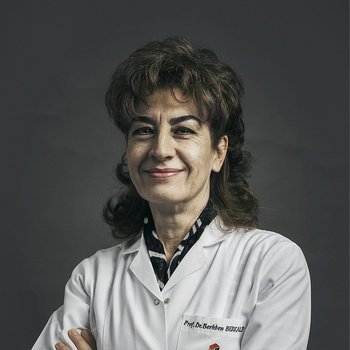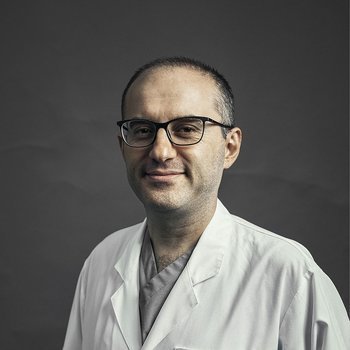Menu
It is very important to take the necessary protective measures from childhood onwards against heart diseases, which can be seen in all age groups from very young ages to older ages and in both genders. Especially those with a family history of heart disease should be checked by a doctor frequently, as they are at higher risk than others. Procedures for the diagnosis, treatment and follow-up of heart diseases are carried out by internal medicine units called Cardiology.
We offer services at international standards with our expert and academic physician staff in our Cardiology departments within our hospital. We stand out with our specialties such as interventional cardiology, non-invasive cardiology, electrophysiology and arrhythmia, and especially minimally invasive heart surgeries performed by specialist physicians using state-of-the-art equipment. We successfully provide services regarding cardiac catheterization and coronary angiography, coronary angioplasty, stent placement, pacemaker implantation (biventricle, ICD) and all emergency procedures. The diseases diagnosed and treated in our cardiology department are as follows:
CONGENITAL HEART DISEASES
Diseases caused by congenital structural disorders of the heart are called congenital heart diseases. These diseases may be hereditary or may occur due to genetic diseases or unknown factors. The most common among these are; A murmur is heard while the heart is resting due to reasons such as structural defects in the heart valves, holes in the heart or vascular stenosis. Although treatment options vary from patient to patient, medication or surgery may be necessary.
Coronary artery diseases
Coronary artery disease, one of the most common cardiovascular diseases, develops as a result of blockage of the coronary arteries, which are the vessels that feed the heart, as a result of atherosclerosis (hardening of the arteries) or the accumulation of fatty plaques in the vessels due to high cholesterol. This situation causes insufficient oxygen to be delivered to the heart muscle and leads to the development of heart failure in later periods. In addition to the use of medication, treatment includes applications such as coronary angioplasty, stent application, minimally invasive techniques and robotic surgery and bypass.
Heart failure
Heart failure develops as a result of damage to the heart due to cardiovascular diseases or a number of different reasons and its inability to pump the required amount of blood to the body. Congenital or acquired structural disorders in the heart, long-lasting high blood pressure, heart valve diseases and damage caused by a heart attack on the heart muscle are among the causes of heart failure. In addition to various drug derivatives, its treatment includes applications such as the use of pacemakers and support devices, surgical treatment methods and heart transplantation.
Heart attack (infarction)
Heart attack, whose medical name is myocardial infarction, is an acute condition that manifests itself with sudden and severe pain and tightness in the chest. In addition to factors such as smoking, diabetes and hypertension, structural disorders of the heart also play a role in the occurrence of a heart attack, for which early intervention is vital. Patients who have a heart attack must be treated urgently. In treatment, practices such as medication use and surveillance, and when necessary, surgical interventions are used.
Heart rhythm disorders (arrhythmia)
Irregular heartbeats or heart functioning differently than it should is called arrhythmia or arrhythmia. This condition manifests itself with negativities such as the heart beating too fast (tachycardia) or beating too slowly (bradycardia), fainting and palpitations. Arrhythmia patients can be treated with the help of medication, electrical treatments such as catheter ablation, or surgical techniques developed specifically for arrhythmia.
Peripheral vascular diseases
Peripheral vascular (artery) disease is a disease that develops in the form of obstruction of blood flow to the arms, legs and organs due to blockages in the arteries due to atherosclerosis (hardening of the arteries). The treatment of this disease, which can occur due to high cholesterol, hypertension, smoking, diabetes, obesity or genetic predisposition, includes the use of medications and surgical interventions such as bypass, endarterectomy and stent application.
heart valve diseases
Heart valve diseases, which are congenitally present in the heart or develop later due to factors such as genetic factors, old age, and severe infection, are characterized by narrowing of the heart valves or blood leakage. While people with valve disease sometimes do not feel any symptoms for years, in some people the disease may manifest itself with symptoms such as constant weakness, palpitations, feeling of congestion and getting tired easily. Clinical and surgical practices such as valve repair or replacement, transcatheter aortic valve replacement (TAVI), and transcatheter valve treatment are used in its treatment.
Aortic artery diseases
Diseases related to the aorta, the largest artery in the body, are grouped as aortic diseases. Aortic aneurysm (expansion), rupture of the vascular layers (dissection), occlusion or stenosis in the vessel are the most common aortic diseases. While only medication may be preferred in aortic diseases detected in the initial stages, angiography, stent application and surgical repair treatments may need to be used in more advanced cases.
Hardening of the arteries (atherosclerosis)
Arteriosclerosis (atherosclerosis), which is very common and plays a role as a triggering factor in the development of many serious heart diseases, develops when the arteries harden and lose their flexibility due to cholesterol accumulation in the vessel walls. Atheroma plaques that form inward on the hardened vascular walls can cause narrowing of the vessels and their blockage over time, resulting in problems that can lead to serious acute conditions such as heart attack and deterioration of organ functions. In addition to the use of medication, lifestyle changes and nutritional therapy in treatment; Surgical interventions such as minimally invasive surgery and bypass are included.
Hypertension
One of the most common chronic diseases in our country and in the world is hypertension. In adults, systolic blood pressure should be below 120 mmHg and diastolic blood pressure should be below 80 mmHg. When blood pressure is constantly above these values, it is called hypertension, and this can lead to the formation of many diseases in the long term. For this reason, blood pressure should be reduced to normal ranges and kept under control with medical nutrition therapy and, if necessary, drug therapy.
Hyperlipidemia / Dyslipidemia
The presence of cholesterol and other blood lipids above the required levels in the blood is a risk factor for the formation of many cardiovascular diseases, especially atherosclerosis. Hyperlipidemia, high levels of various lipid types in the blood; Increased total cholesterol, LDL and triglyceride levels in the blood and low HDL levels, also called good cholesterol, are called dyslipidemia. Since both situations can have major negative effects on health in the long term, cholesterol and fat intake should be balanced with nutritional therapy, and drug treatment should be applied when deemed necessary by the physician.








